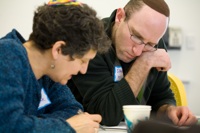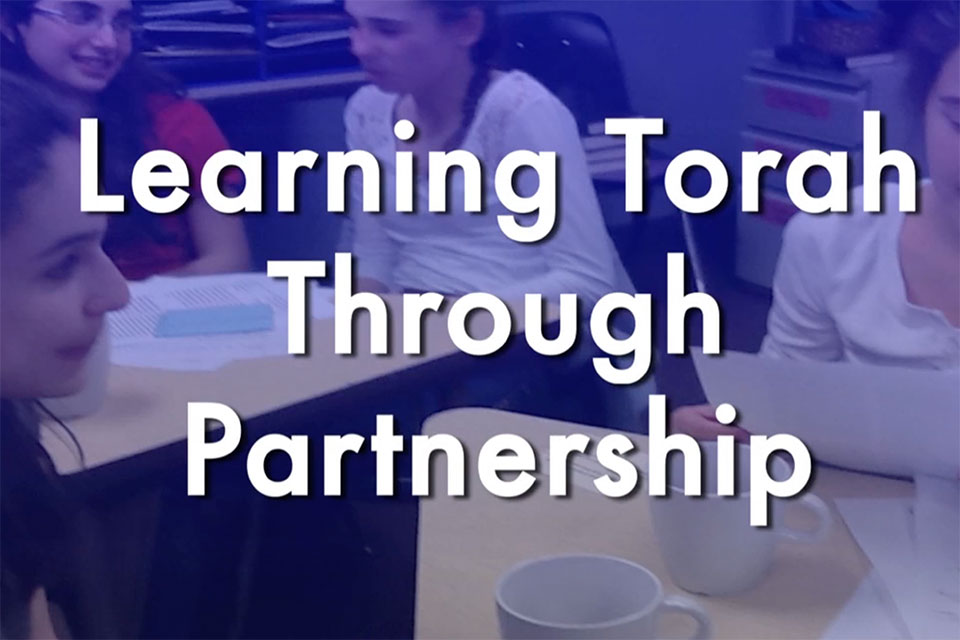Beit Midrash Research Project
“A Philosophy of Havruta: Understanding and Teaching the Art of Text Study in Pairs”
by Elie Holzer with Orit Kent
Winner of the 2014 National Jewish Book Award in Education and Jewish Identity
No longer confined to traditional institutions devoted to Talmudic studies, havruta work, or the practice of students studying materials in pairs, has become more widespread. However, until now there has been little discussion of what havruta text study entails and how it might be conceptualized and taught. This book presented two new perspectives: by offering a model of havruta text study situated in broader theories of interpretation and learning, and by treating havruta text study as composed of textual, interpersonal and intra-personal practices which can be taught and learned.
How do learners in different settings and with varying skill levels become empowered to engage in meaningful Torah study with their peers? How can we turn seemingly incidental moments of discovery and connection — those magical moments of learning — into intentional design and instruction?
These questions animated the work of the Beit Midrash Research Project, which studied the pedagogy and practice of partnership learning, or havruta study, of Jewish texts. People generally think of havruta as two people studying Jewish text, but for us, havruta is much more than that, involving three partners: two people and the text over which they come together.
 Havruta can be viewed as a microcosm for some of the ideals of engagement and learning with texts and peers. Our framework for havruta text study provided one effective way of explaining how this occurs and for helping people learn how to do it better. Our research contributed to the literature on collaborative learning, interpretive discussion, text study, classroom discourse, and teacher development and practice.
Havruta can be viewed as a microcosm for some of the ideals of engagement and learning with texts and peers. Our framework for havruta text study provided one effective way of explaining how this occurs and for helping people learn how to do it better. Our research contributed to the literature on collaborative learning, interpretive discussion, text study, classroom discourse, and teacher development and practice.
We represented the pedagogy of havruta as the overlapping of a teaching and learning stance, structures and practices (Kent and Cook, 2012). When approached in this way, it offers an ambitious and powerful pedagogy for teachers and learners in different educational contexts, in line with 21st-century learning goals.
Three Design Experiments
We worked with selected practitioners and educational institutions to teach our approach to havruta learning, and we studied what occurs in different settings. We conducted three design experiments:
- In the DeLeT teacher education program at Brandeis University with adult learners
- In the Kesher supplementary school for teachers of K-8 students
- In a Hebrew school program for middle school students
We also worked intensively with a third-grade teacher in a Jewish day school to develop and document a havruta-based curriculum and developed a webcase based on this work.
